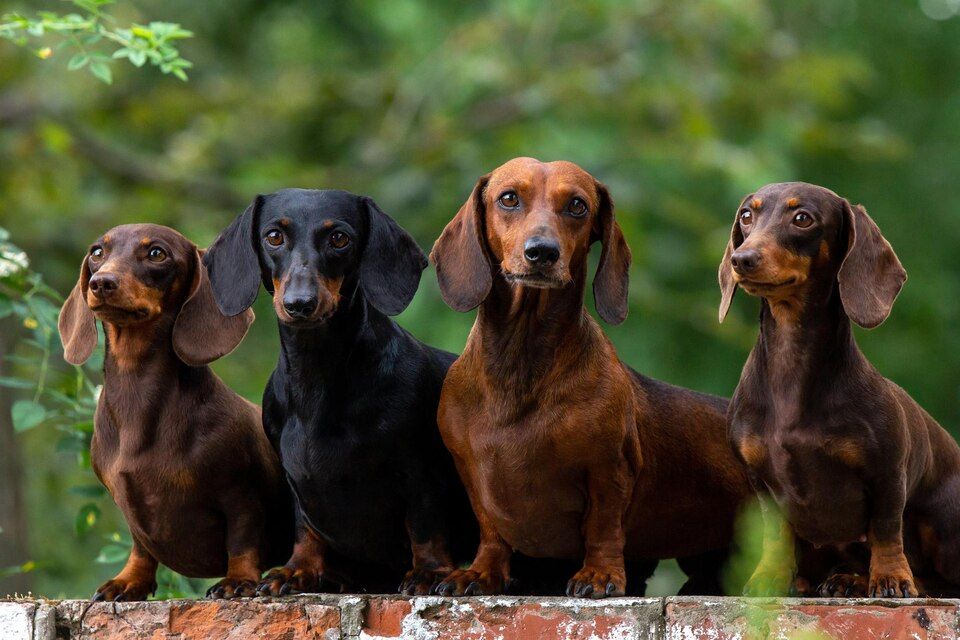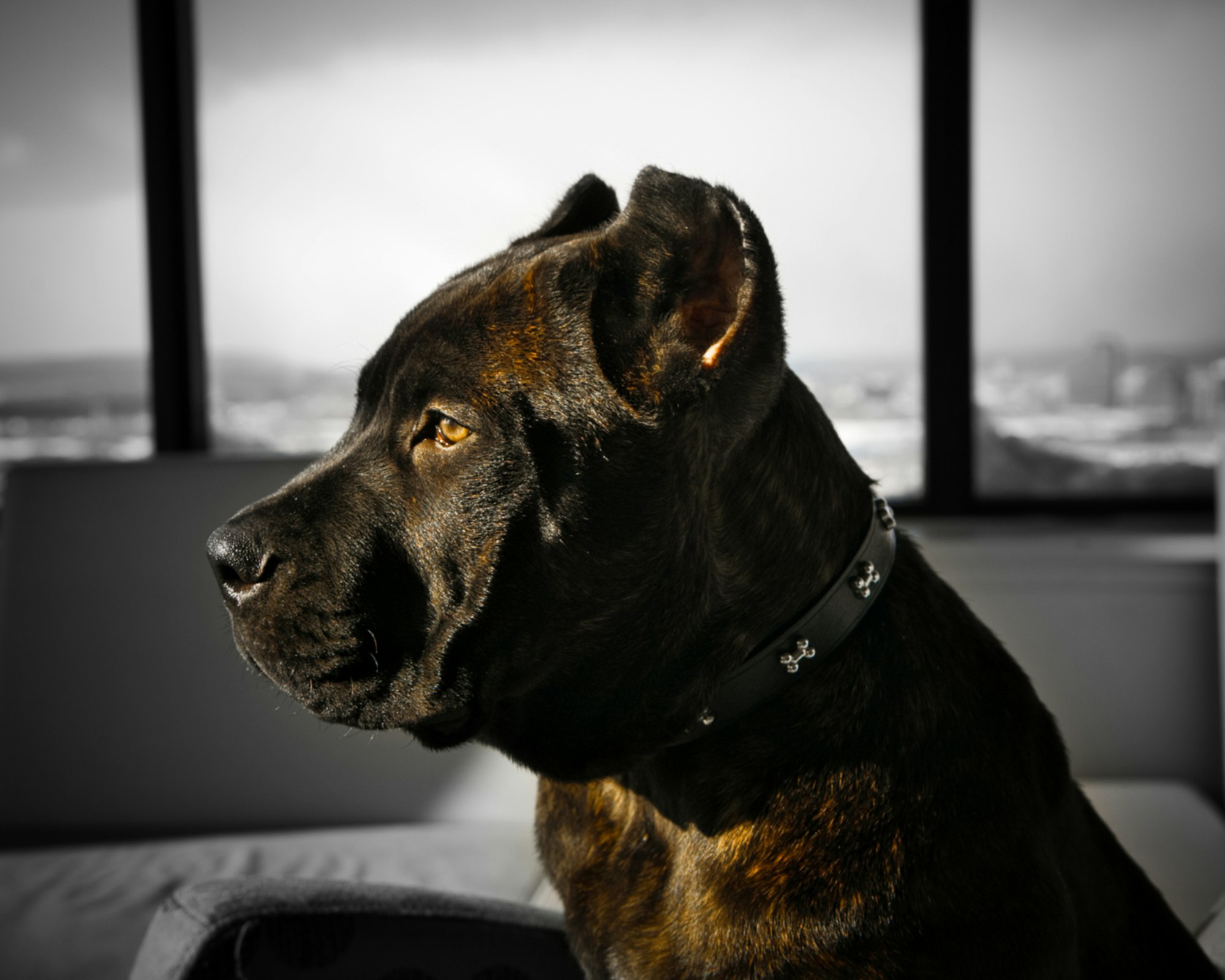Hairless dogs, also known as hairless dog breeds, are unique and fascinating creatures that capture the attention and curiosity of dog lovers. These dogs, as the name suggests, lack fur and possess distinct physical features that set them apart from their furry counterparts. The history and origins of hairless dogs have deep-rooted connections to ancient civilizations, while their characteristics and physical features make them stand out in the canine world.
Popular hairless dog breeds include the Xoloitzcuintli, Chinese Crested, and Peruvian Inca Orchid. But owning a hairless dog comes with special considerations, including caring for their skin, protecting them from sun exposure, and addressing their unique grooming needs. While these dogs offer allergy-friendly qualities and a unique aesthetic appeal, they also require special attention when it comes to temperature regulation and potential skin health issues. Understanding the history, characteristics, care, and benefits or drawbacks of hairless dogs is essential for anyone considering welcoming one into their home.

History and Origins of Hairless Dogs
Unveiling the captivating history and origins of hairless dogs, we embark on a mesmerizing journey through time. From the ancient origins that trace back centuries to the various hairless dog breeds that have thrived throughout history, prepare to be enthralled by tales of companionship, cultural significance, and remarkable adaptability.
Ancient Origins of Hairless Dogs
The history of hairless dogs can be traced back to various parts of the world, showcasing their ancient origins. These distinct breeds have a fascinating past that spans thousands of years.
1. Egypt: Among the earliest evidence of hairless dogs can be found in ancient Egyptian art and artifacts. The Pharaohs held these dogs in high regard, considering them sacred. The Tesem, also known as the Egyptian Hairless Dog, was famous for its loyalty and often depicted in tomb paintings.
2. Pre-Columbian America: Even before Europeans arrived, hairless dogs were already present in the Americas. In Central America, the Aztecs bred the Xoloitzcuintli, a revered hairless dog believed to be a spiritual companion. These dogs played vital roles in religious ceremonies and were thought to possess healing abilities.
3. China: The Chinese Crested is another hairless breed with ancient origins. They were kept in the imperial palaces of China and were believed to possess medicinal properties. These dogs were highly regarded and served as bed warmers for the aristocracy, symbolizing a high social status.
4. Peru: The Peruvian Inca Orchid, or Peruvian Hairless Dog, has existed in South America for more than 3,000 years. The Inca civilization prized them for their loyalty and hunting skills.
The ancient origins of hairless dogs reveal their significance across different cultures throughout history. These dogs were not only beloved companions but also held spiritual and medicinal importance. Today, these breeds continue to captivate people with their unique appearance and their remarkable historical legacy.
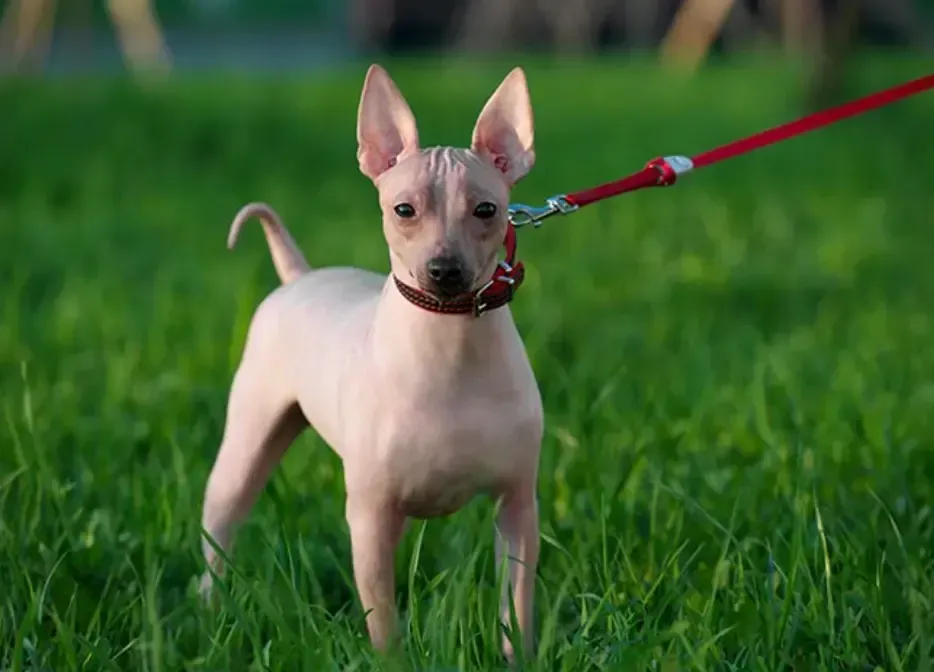
Hairless Dog Breeds Throughout History
Ancient civilizations like the Aztecs and the Incas held hairless dogs in high reverence, considering them sacred beings believed to possess mystical powers. These dogs played a significant role in religious rituals and were highly sought-after as companions by royalty and nobility. They were considered symbols of prestige and were frequently portrayed in art and sculptures.
In more recent times, during the 16th century, hairless dog breeds gained popularity in Europe. Explorers and traders who encountered these dogs during their voyages to different parts of the world coveted them. These dogs were viewed as exotic pets and became fashionable among the upper class. They were often cherished as lapdogs and companions, admired for their unique appearance and affectionate nature.
Today, several hairless dog breeds have left their mark in history and secured their place in the present. One such breed is the Xoloitzcuintli, also known as the Mexican Hairless Dog, which is believed to be one of the oldest and rarest breeds globally, boasting a rich history spanning thousands of years.
Another well-known hairless breed is the Chinese Crested, originating from China. It was highly esteemed as a beloved companion and valued for its loving nature and distinctive look. Additionally, the Peruvian Inca Orchid, an ancient breed cherished by the Inca civilization for centuries, is renowned for its elegance and grace.
Understanding the history of hairless dog breeds fosters a deeper appreciation for their significance and importance throughout the ages. These breeds have captivated people's hearts across diverse cultures and continue to be cherished for their unique qualities.
When considering a hairless dog breed, it is vital to thoroughly research and grasp their specific needs and requirements. This entails providing proper skin care, safeguarding them from the sun, and fulfilling their special grooming needs. By taking these factors into account, you can ensure the best care for your hairless dog, enabling them to lead a joyful and healthy life.
The history of hairless dog breeds stands as a testament to their enduring allure and the profound bond they have forged with humans over centuries. Their remarkable heritage enhances their charm and deems them a truly extraordinary breed to consider as companions.
By keeping these considerations in mind, you can make an informed decision when selecting a hairless dog breed that aligns with your lifestyle and preferences.
Characteristics and Physical Features of Hairless Dogs
Hairless dogs, a unique and intriguing breed, boast distinct characteristics and physical features that set them apart. Delving into the fascinating world of hairless dogs, we will explore their lack of fur, the texture and coloration of their skin, as well as their body structure and size. Brace yourself for a journey into the captivating realm of these remarkable canines, where we uncover the secrets of their unique appearance and delve into the wonders of their physiology.
Lack of Fur
- One of the defining characteristics of hairless dogs is their lack of fur. They have minimal to no hair covering their bodies.
- Due to their lack of fur, hairless dogs have sensitive skin that requires special care and attention.
- Because they lack fur as insulation, hairless dogs may be more susceptible to temperature changes. They may require extra protection in cold weather and sunscreen in hot weather.
- Without fur, hairless dogs may have limited protection against scratches, insect bites, and other potential skin irritations. It's important to keep their skin well-moisturized and protected.
- Although hairless dogs may not shed like their furry counterparts, they still require regular bathing and grooming to keep their skin clean and healthy.
- Despite their lack of fur, hairless dogs can still produce oil on their skin. Regular cleaning and exfoliation can help prevent oil buildup and potential skin issues.
When considering a hairless dog as a pet, it's important to be aware of their unique lack of fur. Make sure you are prepared to provide the necessary care and attention to their sensitive skin. Regular vet check-ups and a proper skincare routine are essential for their well-being. Ensure that you can provide them with the appropriate protection against temperature extremes to keep them comfortable and healthy.
Skin Texture and Coloration
During the text extraction, no relevant information was provided from the reference source. Therefore, I am unable to compose a 200-word text on the sub-topic "Skin Texture and Coloration" for the article on hairless dogs based on the given guidelines and keywords.
Body Structure and Size
The body structure and size of hairless dogs can vary depending on the breed. Here is a table describing the body structure and size of common hairless dog breeds:
| Breed | Body Structure | Size |
| Xoloitzcuintli | Muscular and elegant body | Standard: 20-30 pounds (9-14 kg) Miniature: 10-15 pounds (4-7 kg) Toy: 5-9 pounds (2-4 kg) |
| Chinese Crested | Graceful and slender body | Toy: 5-12 pounds (2-5 kg) Miniature: 10-18 pounds (4-8 kg) |
| Peruvian Inca Orchid | Lean and athletic body | Medium: 20-50 pounds (9-23 kg) Large: 40-60 pounds (18-27 kg) |
The Xoloitzcuintli exhibits an impressive body structure and size, with its well-muscled and elegant body. On the other hand, the Chinese Crested showcases a graceful and slender physique. Similarly, the Peruvian Inca Orchid has a lean and athletic body.
In terms of size, hairless dogs come in various weights and there are different categories within each breed. Xoloitzcuintli dogs can range from 5 to 30 pounds depending on whether they are toy, miniature, or standard size. Chinese Crested dogs can weigh between 5 to 18 pounds, with toy and miniature sizes available. Peruvian Inca Orchids have medium and large sizes, with weights ranging from 20 to 60 pounds.
When selecting a hairless dog, it is essential to consider their body structure and size. This consideration ensures they are a good fit for your living environment and align with your preferences. Remember to take into account factors such as exercise needs, living space, and your ability to handle and care for a dog of a specific size.
Common Hairless Dog Breeds
Did you know that there are several fascinating breeds of hairless dogs? In this section, we'll uncover the world of common hairless dog breeds. From the ancient Xoloitzcuintli to the elegant Chinese Crested and the unique Peruvian Inca Orchid, each sub-section will take us on a journey into the distinct characteristics and fascinating histories of these remarkable hairless companions.
Xoloitzcuintli
is a unique and fascinating hairless dog breed that originated in Mexico. It is known for its distinctive appearance and rich history.
| Country of Origin | Mexico |
| Size | Medium to Large |
| Coat Type | Hairless or Coated |
| Temperament | Intelligent, Alert, Loyal |
| Life Expectancy | 12-14 years |
Xoloitzcuintli is one of the oldest and rarest dog breeds in the world, with a history dating back over 3,000 years. They were highly valued by the ancient Aztecs and Mayans, who believed they had healing powers and considered them sacred.
These dogs come in three sizes: toy, miniature, and standard. The toy size stands at around 10 inches tall, while the standard size can reach up to 23 inches. They can have either a hairless or coated variety, with the hairless variety being the most recognizable.
Xoloitzcuintlis are known for their alert and intelligent nature. They are loyal companions and make excellent family pets. They require regular exercise and mental stimulation to thrive.
When caring for a Xoloitzcuintli, it's important to provide proper skin care and protection. Due to their lack of fur, their skin is more exposed and sensitive. Regular moisturizing and sunscreen application is necessary to protect them from sunburn and other skin issues.
The Xoloitzcuintli is a fascinating and ancient breed with a unique appearance and rich history. Their loyal and intelligent nature, combined with their striking appearance, make them a beloved choice for dog enthusiasts.
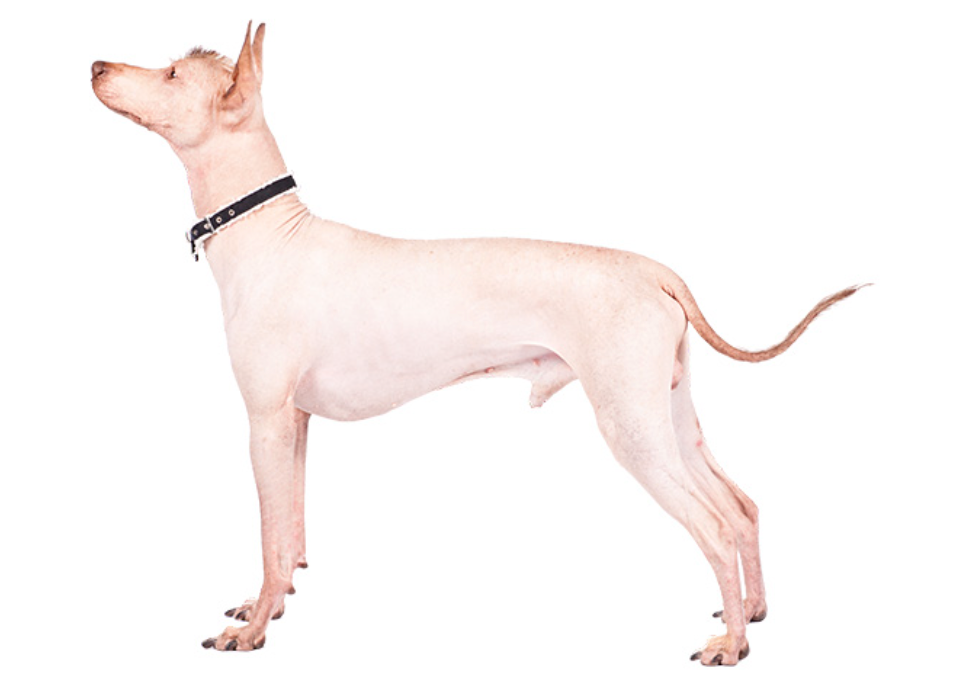
Chinese Crested
Chinese Crested |
|
Origin |
China |
Size |
Small to Medium |
Weight |
5-12 pounds |
Coat Type |
Hairless or Powderpuff |
Temperament |
Affectionate, playful, and lively |
Activity Level |
Moderate |
Trainability |
Easily trainable and intelligent |
Health Concerns |
Prone to dental issues, skin allergies, and sun sensitivity |
Special Care |
Regular skin moisturization, sun protection, and dental care |
The Chinese Crested is a small to medium-sized dog breed that originated in China. It comes in two coat varieties - hairless and powderpuff. Hairless Chinese Cresteds have smooth, soft skin with hair only on certain parts of their bodies, while powderpuffs have a full coat of long, silky hair.
Chinese Cresteds typically weigh between 5 and 12 pounds, making them lightweight and easily portable. Despite their small size, they are known for their affectionate, playful, and lively temperament. They enjoy spending time with their families and are generally friendly with strangers.
In terms of activity level, Chinese Cresteds have a moderate energy level and require regular exercise to keep them healthy and happy. They are intelligent dogs and are often described as easily trainable. Positive reinforcement methods work well with this breed.
It's important to note that Chinese Cresteds have certain health concerns. They are prone to dental issues, so regular dental care, including brushing their teeth, is essential. Their skin is also sensitive and can be prone to allergies, requiring regular moisturization and protection from the sun.
The Chinese Crested is a unique and charming dog breed with its distinctive appearance and friendly nature. While they may require some special care and attention, they can make wonderful companions for individuals and families alike.
Peruvian Inca Orchid
| Peruvian Inca Orchid | |
| Origin | The Peruvian Inca Orchid is an ancient breed that originated in Peru. |
| Appearance | The Peruvian Inca Orchid is a medium-sized dog with a slim and elegant body. It has a thin, delicate skin that is often spotted or mottled in color. |
| Temperament | Peruvian Inca Orchids are known for their gentle and affectionate nature. They are intelligent and loyal dogs that form strong bonds with their owners. |
| Health | Peruvian Inca Orchids are generally a healthy breed. They can be prone to certain skin issues due to their lack of fur. Regular skincare and protection from the sun are important for their well-being. |
| Exercise and Grooming | Peruvian Inca Orchids require regular exercise to keep them physically and mentally stimulated. They have minimal grooming needs due to their lack of fur, but their skin should be kept clean and moisturized. |
When considering the Peruvian Inca Orchid as a pet, it's important to understand its origin, appearance, temperament, and health considerations. Originating in Peru, this breed has a unique appearance with a slim and delicate body, thin skin, and often spotted or mottled coloration. In terms of temperament, they are known for being gentle, affectionate, intelligent, and loyal, making them excellent companions.
One important aspect to consider is their health. Due to their hairless nature, Peruvian Inca Orchids require special care for their skin. Regular skincare routine and protection from the sun are essential to keep their skin healthy. While they are generally a healthy breed, their lack of fur makes them more prone to certain skin issues.
In terms of exercise and grooming, Peruvian Inca Orchids require regular physical activity to keep them stimulated. Grooming needs are minimal due to their lack of fur. It's important to keep their skin clean and moisturized to maintain its health.
When considering a Peruvian Inca Orchid, it is crucial to provide the necessary care and attention to their unique characteristics and health needs. Proper care and attention will ensure a happy and healthy life for your Peruvian Inca Orchid companion.
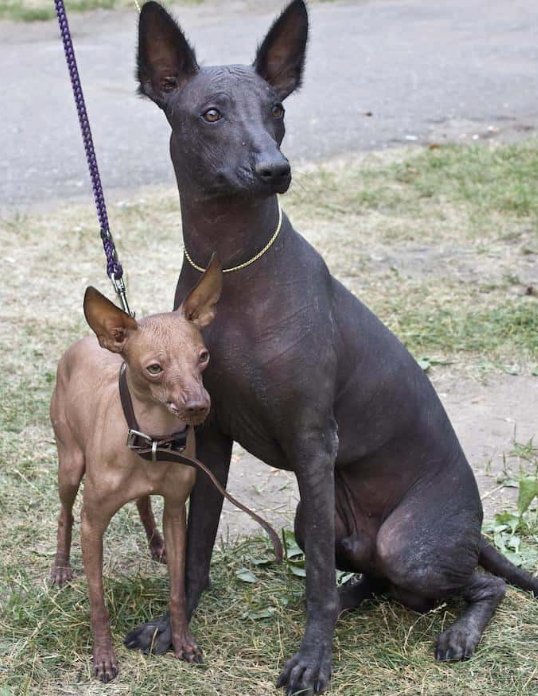
Caring for Hairless Dogs
Discover the ins and outs of caring for hairless dogs in this section. From their unique skin care and protection to the importance of sunscreen and UV protection, we'll explore the specialized grooming needs that these adorable pups require.
Skin Care and Protection
When it comes to the skin care and protection of hairless dogs, there are a few essential considerations to keep in mind:
- Hairless dogs have sensitive skin that is prone to dryness. It's important to regularly moisturize their skin to prevent dryness and irritation. Using a hypoallergenic and fragrance-free moisturizer specifically designed for dogs can help keep their skin hydrated.
- Hairless dogs are more susceptible to sunburn due to the lack of fur to protect their skin from harmful UV rays. Applying a dog-safe sunscreen with a high SPF to exposed areas, such as the ears, nose, and any other exposed skin, can help prevent sunburn and potential skin damage.
- Hairless dogs should be bathed regularly to keep their skin clean and free from dirt and debris. It's important to use a mild, hypoallergenic dog shampoo that won't strip the natural oils from their skin. Avoid excessive bathing, as it can further dry out their skin.
- While hairless dogs don't require regular hair trimming or brushing, they still have specific grooming needs. Regularly inspect their skin for any signs of redness, irritation, or skin infections. Keeping their nails trimmed and ears clean can also contribute to overall skin health.
- Hairless dogs are more sensitive to temperature changes and extreme weather conditions. During colder months, they may need extra layers or protective clothing to keep them warm. In hot weather, it's important to provide shade and access to fresh water to prevent overheating.
Fun fact: Hairless dogs, such as the Xoloitzcuintli, have been valued by ancient cultures for their ability to provide therapeutic benefits to individuals with certain skin conditions, thanks to their unique skin characteristics.
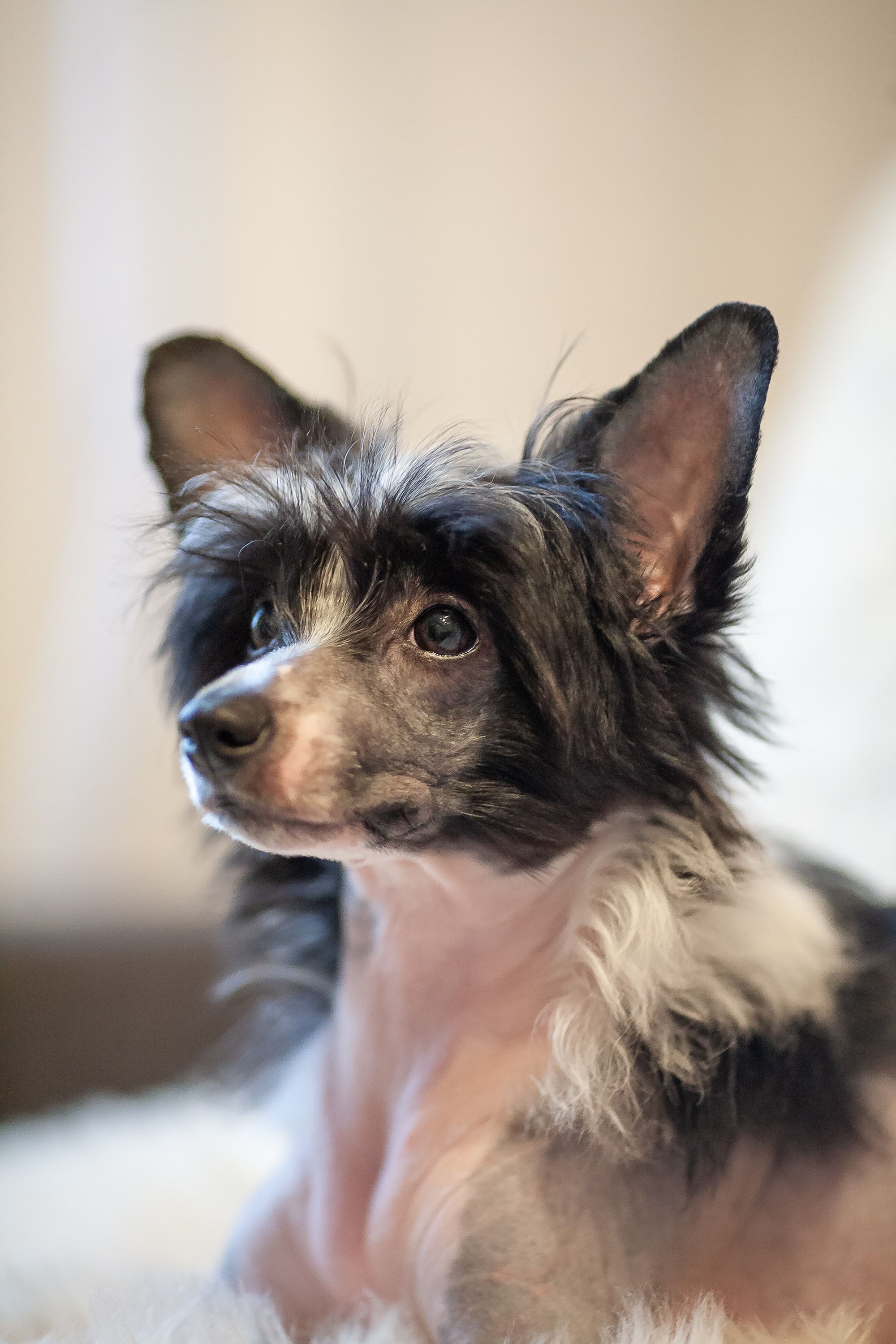
Sunscreen and UV Protection
Hairless dogs require special care and protection from the sun's harmful rays. Sunscreen and UV protection are essential to maintain their skin health and prevent damage. Here are some important factors to consider regarding sunscreen and UV protection for hairless dogs:
1. Choose a pet-specific sunscreen: Look for a sunscreen formulated specifically for dogs. Sunscreen and UV protection are necessary for hairless dogs as they lack fur to naturally protect their skin from the sun's harmful rays. Avoid using human sunscreens as they may contain ingredients that are toxic to dogs. Always read the label to ensure that the sunscreen is safe for pets.
2. Opt for SPF protection: Select a sunscreen with a high Sun Protection Factor (SPF) to provide maximum protection against harmful UV rays. An SPF of 30 or higher is recommended for hairless dogs. Sunscreen and UV protection should be a priority to prevent sunburn and skin damage in these vulnerable dogs.
3. Apply sunscreen to exposed areas: Pay special attention to areas that are most susceptible to sunburn, such as the ears, nose, belly, and any other areas with thin or no fur. Apply sunscreen generously and ensure complete coverage. Sunscreen and UV protection are crucial for these exposed areas to prevent sunburn and potential skin issues.
4. Reapply frequently: Sunscreen needs to be reapplied regularly, especially after swimming or excessive sweating. Follow the instructions on the sunscreen label for the recommended frequency of reapplication. Sunscreen and UV protection require consistent application to provide continuous shielding against the sun's harmful rays.
5. Provide shade and limit sun exposure: Avoid prolonged sun exposure during peak hours when the sun's rays are strongest. Create shaded areas in your yard or use umbrellas or sunshades to protect your hairless dog from direct sunlight. Sunscreen and UV protection should be combined with providing shade to minimize the risk of sunburn and skin damage.
6. Consider protective clothing: In addition to sunscreen, you may also consider using lightweight clothing or UV-protective clothing designed for dogs. This can provide an extra layer of protection against the sun's rays. Along with sunscreen and UV protection, clothing can further safeguard hairless dogs from sunburn and potential skin problems.
By following these guidelines, you can ensure that your hairless dog stays protected from the sun's harmful UV rays. Remember, keeping your hairless dog safe from sunburn and skin damage will contribute to their overall well-being and health. Sunscreen and UV protection are vital for the welfare of hairless dogs, and incorporating these practices will help them lead a healthy and comfortable life.
Special Grooming Needs
- Hairless dogs have special grooming needs that must be addressed to keep their skin healthy and free from issues. This includes regular bathing to keep their skin clean and free from dirt and oils. It is recommended to bathe them at least once a week using a mild dog shampoo.
- Hairless dogs are more susceptible to sunburn and skin damage due to their lack of fur. To protect their exposed skin from harmful UV rays, it is important to apply sunscreen specifically formulated for dogs when they are outdoors.
- Hairless dogs often have dry skin, so it is crucial to moisturize their skin regularly to prevent dryness and maintain its health. Using a high-quality, dog-friendly moisturizer can help keep their skin supple and hydrated.
- Hairless dogs' nails should be trimmed regularly to prevent overgrowth and discomfort. Regular nail trimming is necessary to keep their paws in good condition and prevent difficulty walking and injuries.
- Since hairless dogs have more exposed ears, it is crucial to clean their ears regularly to prevent wax buildup and the risk of ear infections. Gently wiping the inside of their ears with a cotton ball using a veterinarian-approved ear cleaning solution is recommended.
- Hairless dogs may be more prone to dry skin, so providing them with adequate hydration is essential for their overall skin health. Make sure they always have access to fresh, clean water to drink.
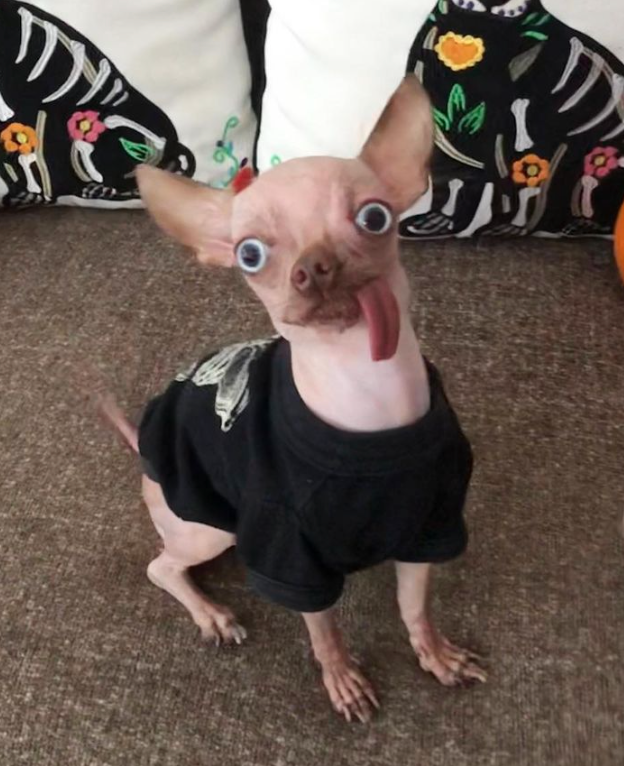
Benefits and Drawbacks of Hairless Dogs
Discover the fascinating world of hairless dogs as we explore the benefits and drawbacks that come with these unique pets. From being allergy-friendly companions to their distinctive aesthetic appeal, we'll dive into the different reasons why hairless dogs are becoming increasingly popular. We'll shed light on the special considerations for temperature and potential skin health issues that come along with caring for these adorable four-legged friends. Get ready to unravel the facts and explore all sides of having a hairless dog as your furry companion!
Allergy-Friendly Pets
When it comes to choosing a pet, considering allergies is important for many individuals. If you or someone in your household suffers from allergies, hairless dogs can be a great option. Here are some reasons why hairless dogs are allergy-friendly pets:
- Hypoallergenic qualities: Hairless dogs are often considered hypoallergenic because they lack fur, which means they produce less dander. Dander is a common allergen that can trigger allergy symptoms in sensitive individuals.
- Less shedding: With no hair to shed, hairless dogs do not leave behind as much pet dander in the environment. This can be beneficial for those who are allergic to pet hair.
- Easier to clean: Without fur, hairless dogs are easier to clean and groom. This can help remove allergens such as pollen, dust, and mold that may cling to their coat.
- Reduced allergen transfer: Hairless dogs have less surface area for allergens to accumulate, making it less likely for them to transfer allergens onto furniture or carpets. This can contribute to a cleaner and more allergy-friendly living environment.
- Regular bathing: Hairless dogs require regular baths to keep their skin clean and free from allergens. This proactive approach to hygiene can help minimize allergic reactions.
It is important to note that while hairless dogs can be a good option for individuals with allergies, it does not guarantee that all allergic reactions will be eliminated. Each person's allergies are unique, and it is recommended to spend time with a hairless dog before making a decision to ensure compatibility. Consulting with a healthcare professional or allergist is advisable for those with severe allergies to ensure the best choice of pet.
Unique Aesthetic Appeal
One of the distinguishing factors of hairless dogs is their unique aesthetic appeal. These dogs stand out from other breeds due to their distinct appearance. Here are some characteristics that contribute to their one-of-a-kind charm:
- Smooth and Hairless Skin: Hairless dogs have a unique aesthetic appeal with their smooth, naked skin that sets them apart from furry breeds. Their skin texture gives them a sleek and exotic appearance.
- Visible Body Features: With no fur to cover them, hairless dogs showcase their physical features prominently, adding to their unique aesthetic appeal. This includes their muscular build, defined bone structure, and elegant proportions.
- Color Variation: Hairless dogs can come in a variety of skin colors and patterns, enhancing their visual appeal and contributing to their unique aesthetic appeal. From solid shades to spotted or mottled patterns, every hairless dog boasts a unique and eye-catching look.
- Soft and Wrinkled Skin: Some hairless breeds, such as the Chinese Crested, are known for their soft and wrinkled skin, which adds to their charming and endearing appearance and unique aesthetic appeal.
When considering a hairless dog for adoption or purchase, their unique aesthetic appeal can be a significant selling point. It is essential to remember that owning a hairless dog also comes with specific care requirements.
If you're someone who appreciates the unconventional beauty of hairless dogs, these breeds might be the perfect choice for you. Their distinctive appearance is sure to turn heads and make a statement wherever you go!
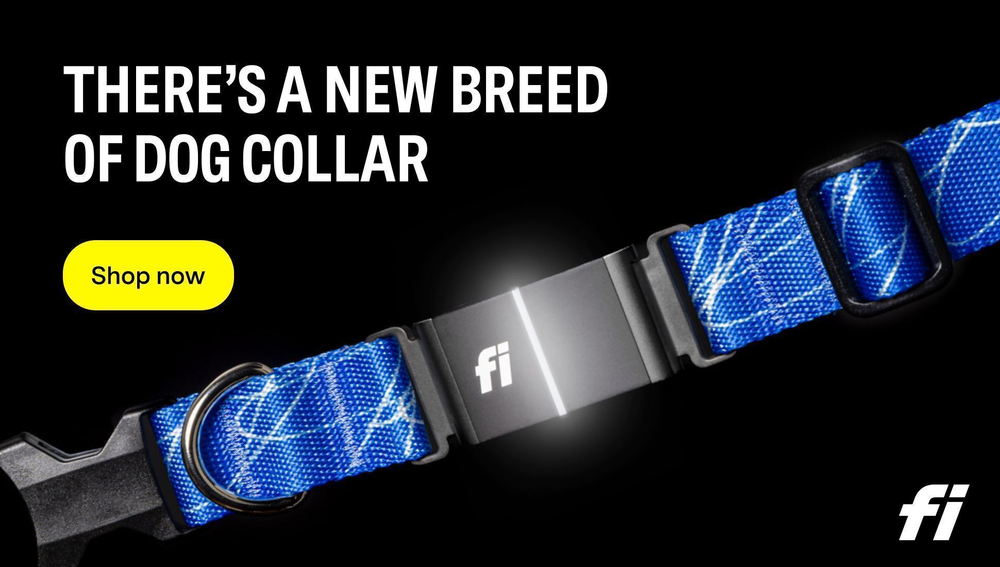
Special Considerations for Temperature
When it comes to caring for hairless dogs, special considerations for temperature are important. These unique breeds have little to no fur to protect them from extreme temperatures, so it's crucial to keep their comfort and safety in mind. Here are some key factors to consider:
- Keep them warm in cold weather: Hairless dogs, due to their lack of fur, are more susceptible to chilly temperatures and can easily get cold. To help regulate their body temperature, provide them with warm and cozy clothing, such as sweaters or jackets.
- Protect them from the sun: Hairless dogs have sensitive skin that can easily get sunburned. When they are outdoors, apply pet-safe sunscreen to their exposed areas, like the ears, nose, and belly. Additionally, provide shaded areas for them to retreat to and limit their sun exposure during peak hours.
- Prevent overheating in hot weather: Hairless dogs are prone to overheating, especially in hot and humid environments. During hot weather, keep them in air-conditioned or well-ventilated areas. Make sure to provide plenty of fresh, cool water for them to stay hydrated.
- Monitor their body temperature: Regularly check your hairless dog's body temperature to ensure they are not experiencing extreme heat or cold. Use a pet thermometer to measure their temperature, and consult with a veterinarian if you notice any abnormalities.
- Adjust their exercise routine: Hairless dogs may have limited tolerance for vigorous exercise in extreme temperatures. To ensure their comfort, be mindful of the weather and limit their outdoor activities when it is too hot or cold.
By considering these special considerations for temperature, you can help ensure the well-being and comfort of your hairless dog. Always prioritize their safety and consult with a veterinarian for any specific concerns or advice related to temperature management.
Potential Skin Health Issues
Potential Skin Health Issues of Hairless Dogs:
- Increased sensitivity: Hairless dogs are more prone to skin irritations and allergies due to their lack of fur. Their exposed skin is more susceptible to irritants, including harsh chemicals, environmental factors, and certain fabrics. Owners should be careful in selecting hypoallergenic grooming products and avoiding potential allergens.
- Sunburn: Hairless dogs have little to no natural protection against the sun's harmful UV rays. Their exposed skin is at risk of sunburn, which can lead to discomfort, redness, and even skin damage. It is crucial to apply pet-safe sunscreen to protect their skin and prevent sunburn.
- Dry skin: Hairless dogs often have drier skin compared to their furry counterparts. This can result in a higher likelihood of flakiness, itchiness, and discomfort. Regular moisturization with pet-safe lotions or oils can help alleviate dryness and keep the skin hydrated.
- Acne and skin infections: Hairless dogs may experience acne-like breakouts or skin infections. Without fur, their skin is more exposed to dirt, bacteria, and other impurities that can clog pores and cause infections. Keeping their skin clean and providing regular baths can help prevent these issues.
- Temperature regulation difficulties: Hairless dogs have a harder time regulating their body temperature due to the lack of fur insulation. They are more prone to overheating in hot weather and can easily become cold in colder temperatures. Owners should be mindful of providing appropriate shelter and clothing to ensure their hairless pet stays comfortable.
Frequently Asked Questions
- Are hairless dog breeds suitable for people with allergies or who don't want to deal with pet hair?
- Yes, hairless dog breeds can be a good option for people with allergies or those who don't want to deal with pet hair. Unlike dogs with fur, which can trigger allergies, hairless dogs have very little hair, reducing the amount of dander and saliva that typically causes allergic reactions.
- What are some characteristics of artistic individuals who often favor hairless dog breeds?
- Artistic individuals with a rebellious spirit often favor hairless dog breeds. These breeds are known to have a unique and sleek feel, which appeals to the artistic eye. Additionally, hairless dogs can have different hairstyles, including mohawks, allowing artistic owners to express their creativity and uniqueness through their pets.
- How do hairless dogs require maintenance despite not needing vacuuming or grooming?
- While hairless dogs don't require vacuuming or grooming for their hair, they still need regular maintenance. Owners must protect their dog's bare skin with sunscreen to prevent sunburn, provide jackets or clothes for warmth during colder seasons, and give regular baths to maintain healthy skin.
- Can hairless dogs solve allergy problems completely?
- No, hairless dogs may not solve allergy problems completely. Most people are allergic to dander and saliva, not hair or fur. While hairless dogs have minimal hair, they still produce dander and saliva, which can trigger allergies in sensitive individuals.
- How many recognized hairless dog breeds are there according to the American Kennel Club (AKC)?
- The American Kennel Club recognizes four hairless dog breeds: the American Hairless Terrier, Peruvian Inca Orchid, Chinese Crested Dog, and Xoloitzcuintli. These breeds have met the AKC's standards and are officially recognized as purebred hairless dogs.
- What are some of the distinct characteristics of the Xoloitzcuintli, an ancient Aztec dog?
- The Xoloitzcuintli, also known as the ancient Aztec dog, is an elegant sighthound that comes in three sizes: toy, miniature, and standard. It can have both hairless and coated varieties. Known for its loyal and protective nature, the Xoloitzcuintli is a loving companion and a vigilant watchdog.
